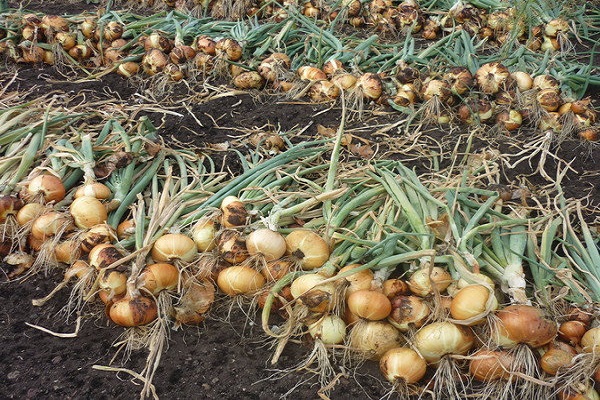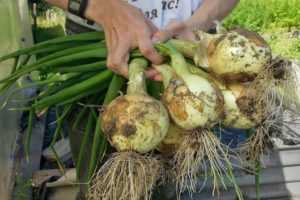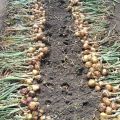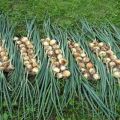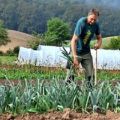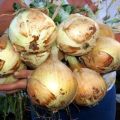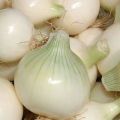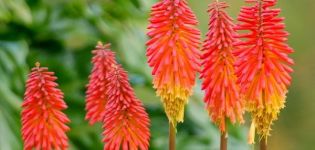The timing of harvesting onions in the Urals, the time when to dig
Even beginners can grow onions. But only experienced gardeners probably know when to harvest this crop. The timing of cleaning and planting directly depends on weather and climatic conditions. To correctly determine the technical ripeness of a crop, certain skills and experience are required, as well as a stock of theoretical knowledge.
Typical mistakes in determining the timing of collection
Onions in the Urals are grown with the same success as in other regions. Only the picking and planting times differ due to the characteristic features of the climate. In this regard, novice gardeners make several basic mistakes associated with collection. But the safety of the entire crop depends on this.
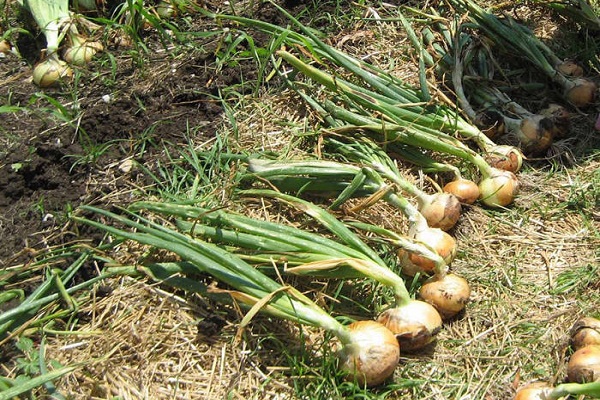
Beginners, after reading special literature on the correct cultivation of onions, are waiting for the moment when all the tops on the plants turn yellow and dry. Before that, onions are in no hurry to remove them from the garden. This is done in vain, since each variety ripens at a different period. Even heads of the same variety do not ripen at the same time. Those bulbs that are in the ground for longer than the prescribed period begin to rot or put new roots and grow again. They will no longer be stored.
It is dangerous not only to overexpose, but also to underexpose onions in the garden. If the heads do not mature, they do not form protective scales. This is fraught with rotting during prolonged storage. Such a crop is subject to immediate processing or consumption. Therefore, it is important to be able to correctly determine the technical ripeness of onions and know the peculiarities of its collection in the Urals.
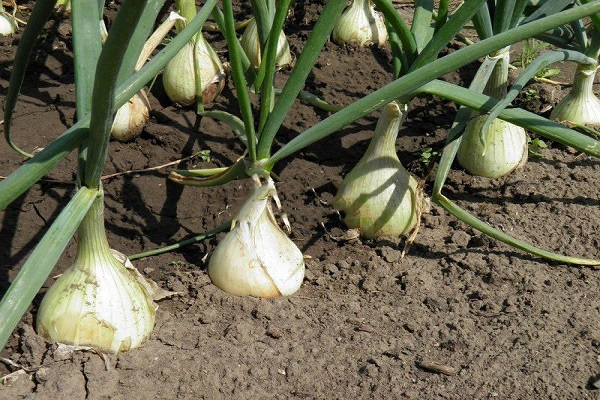
Mathematical calculation of collection dates
When buying seed, the ripening period of the crop is indicated on the packaging. But these data are approximate, since they do not take into account the climatic and weather features of the region. Experienced gardeners proceed from the fact that before onions ripen in the Urals, from the moment of planting on the beds, the seed takes from 70 to 75 days.
In order to find out the harvest time, you need to record the date of planting the onion sets and add 75 days to it. In the Urals, onions are planted approximately on May 10. At the same time, the harvesting period determined by the mathematical method falls on July 20. But this time is indicated approximately, because it is impossible to take into account the characteristics of all varieties, as well as the weather in summer.
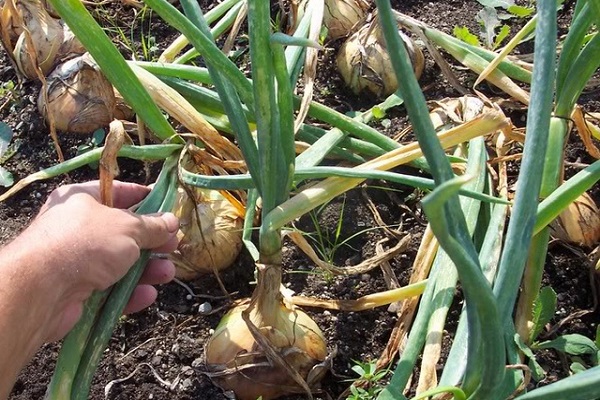
Influence of weather on onion ripening timing
The weather in the summer season has a strong effect on the maturation of all plants grown by gardeners. The timing of harvesting onions can completely coincide with the mathematical calculation, provided that sunny weather and moderate rainfall prevail in summer. In cool and rainy weather, these periods are significantly extended.
To correctly determine the time of harvesting onions in the Urals, you need to follow the weather forecast. It will not be superfluous to learn how to conduct your own observations and determine the situation for the near future. With a stretched and non-simultaneous ripening of the vegetable, you can resort to partial harvesting.
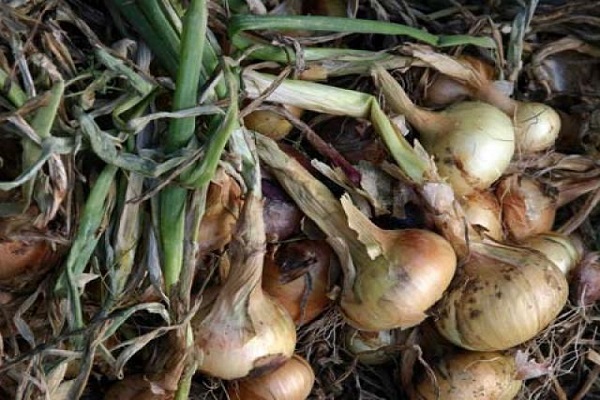
External signs of onion ripeness
Mathematical methods for determining when to dig out onions are not always reliable. Experienced gardeners trust more external signs. The technical ripeness of onions is judged by the following criteria:
- the stem and tops turned yellow underneath;
- discoloration of the tips of the leaves;
- the neck becomes soft and unable to hold the stem;
- the husk on the pulled out onion head is removed without effort, rustles.
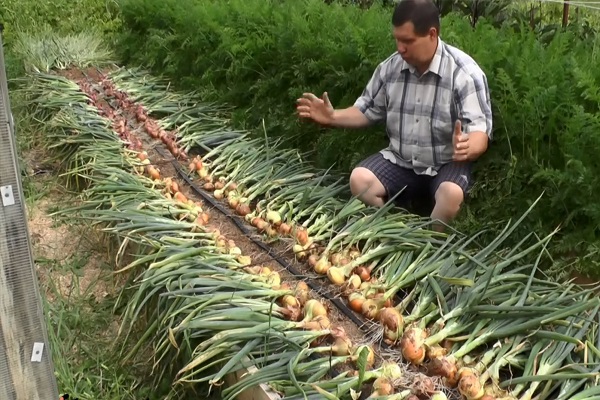
In the presence of these signs in the aggregate, you can harvest the crop from the garden. The old people tried to collect the onions before August 2 (Ilyin's Day), since according to legends, after this holiday the rainy season began. Damp weather is highly undesirable during harvesting. The bulbs will have to dry for a long time, and the shelf life will be significantly reduced. In the worst case, the heads will rot right in the soil and are unusable for human consumption.
Acceleration of ripening time
In the Urals, rainy weather begins early, so it turns out to be problematic to remove the turnip. Gardeners have learned to deal with this problem and speed up onion ripening so as not to be left without a crop. To accelerate the onset of the stage of technical maturity, two main methods are used:
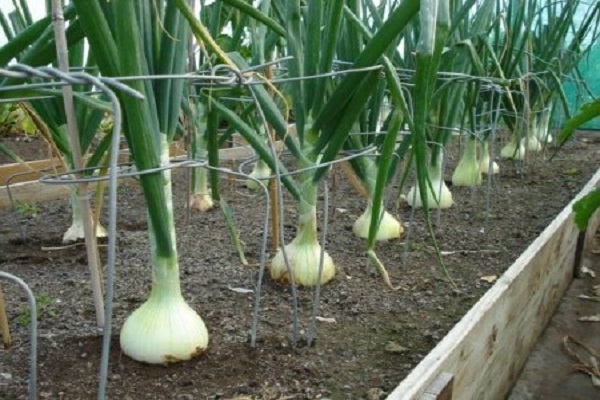
- Forced bending of the tops to the soil.
- Dig in and raise the ground with a small shovel.
With the first method, the supply of nutrients to the tops is significantly reduced, as a result of which it begins to turn yellow and dries quickly. In the second method, the longest roots are cut off, nutrients from the tops are transferred to the head, as a result of which the onion ripens. With artificial acceleration of the onset of technical ripeness, smaller heads are obtained than with their natural course. But you can harvest onions on time, which will be perfectly stored all winter.
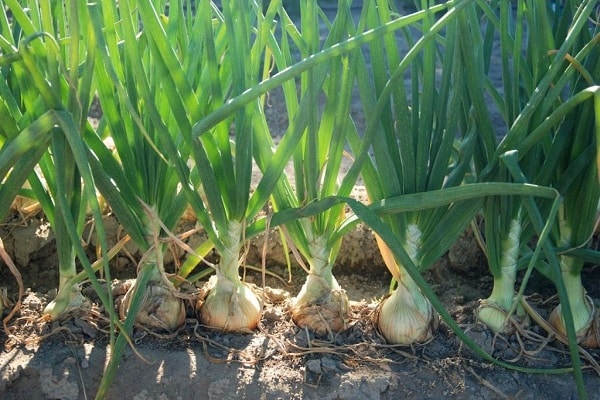
Harvesting sevka
Incorrectly chosen harvest time for onion sets fraught with the fact that gardeners will ruin not only the harvest of this year, but also the next. If it was planned to sell surplus goods, then the profit will also be reduced to zero. Watering is completely stopped a week before the expected harvest.
They look through the weather forecast for the near future and choose a few sunny fine days to be devoted to collecting onions. The tops, which itself did not turn yellow and did not lie on the ground, are laid down forcibly.
Sevka is harvested by digging. Otherwise, some heads may remain in the ground or be damaged. Do not rush and fuss, everything is done as carefully as possible. The bulbs are removed from the ground together with the tops and are not shaken off, the excess soil is wiped off. The crop is piled up right in the garden and left to dry for a while.
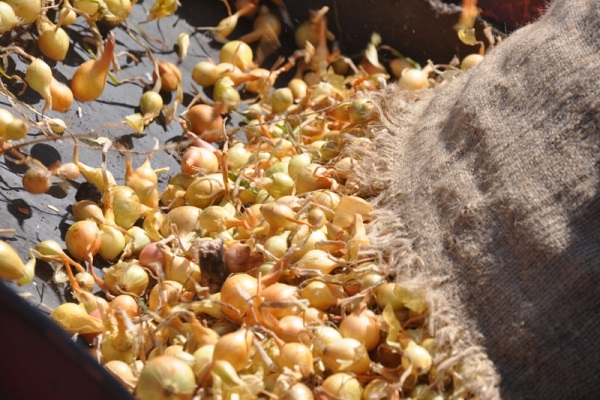
Do not leave the harvested onions in the beds until morning, because the dew will greatly moisten it and you will have to dry it again. If cloudy or damp weather is foreseen, then leaving the sevok to dry in the garden is pointless. It is better to place it under a well-ventilated canopy, where shelving is pre-built.
Features of harvesting
The time for harvesting onions in the Urals should be carried out on time. For this, experienced gardeners recommend using all known methods for determining technical maturity in aggregate. Each of them individually has its advantages and disadvantages, but it cannot guarantee that you will not make a mistake. With complex use, the chances of making a mistake are less.
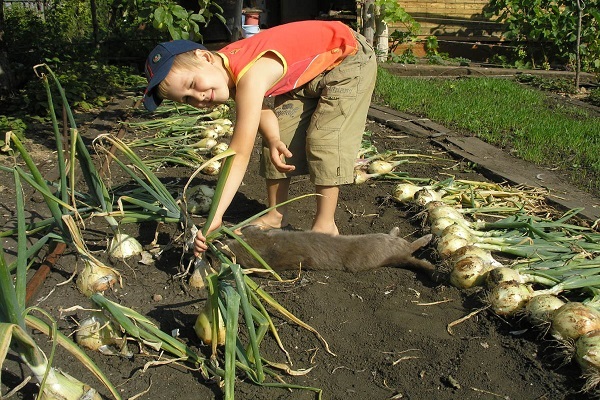
After digging the onion, you do not need to immediately cut the tops from it. As it dries up, nutrients will flow into the head. The harvested crop should lie under a well-ventilated canopy for 2-3 weeks and ripen. Only then can it be iterated over and sent to persistent storage. When harvesting late varieties, it is worthwhile to optimally calculate the timing so that the first frosts do not catch the onions during ripening.
